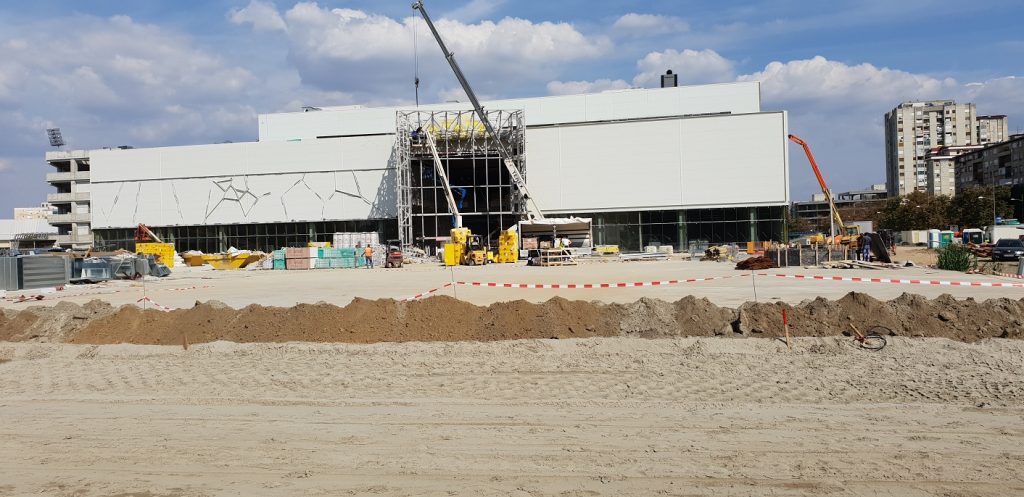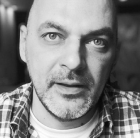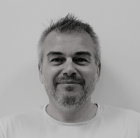
Apart from the request to extend the permit for pumping excess underground water in the sewage system during the construction works on the Promenada Shopping Centre, submitted by the contractor P.A.B. Company, “Vodovod i kanalizacija” PUC also rejected a request from the investor NEPI Rockcastle to continue pumping excess water even after the end of the construction works, i.e. while the facility was already in use.
This has been confirmed by the chief engineer at “Vodovod i kanalizacija” Ikonija Karadzic in her statement to VOICE. She said that the investor had requested in February of last year to be allowed to continuously release 60 litres of underground water into the sewage system of Novi Sad for an indefinite period of time during the exploitation of the facility.
“We replied with a negative answer and explained that we could give them the permit we issued during the construction works and that once the works were over, we were no longer under the obligation to allow it. Draining of excess underground water is not among our core activities, nor can we accept that responsibility, since it is simply impossible. Nowhere in the world is underground water released constantly into a sewage system,“ says Ikonija Karadzic.
When it comes to the permit to release underground water, she explained that such permit was issued to contractors only during construction works, until the foundations are protected and hydro-insulation is installed. That did not affect the system, she added, because it did not last a long time.
“It is a common procedure for all construction sites in the city, because that’s what Novi Sad is like. The whole city is above underground water and very often, almost every large and important facility has a problem,” she explained and added that the permit was normally renewed after two or three months, but in case of Promenada it had been renewed for a period of over one year.
“Vodovod i kanalizacija” PUC: “The construction of the facility probably did not see the problem of foundation hydro-insulation solved”
When asked why the investor had requested for the underground water to be released into the sewage system beyond the end of the envisaged construction works, Ikonija Karadzic replied that it was a problem the investor and contractor should make public, because they had probably failed to solve the problem of the foundation hydro-insulation during the construction works.
Professor at the Faculty of Civil Engineering in Subotica Petar Santrac, who was hired by the SBR Soletanche Bachy from Romania, the company in charge of project design, to conduct an assessment of the influence off permanent pumping of excess underground water into the sewage system onto the facilities in the vicinity of Promenada, said in his statement to VOICE that the investor had opted for a system that had been designed to drain water during the entire period of its exploitation.
“They did not envisage a basin, which would allow the water level to raise, but they simply installed a thin layer of road surface, down on the second level and they envisaged the water should be constantly drained and pumped out for as long as the facility is in use,” says Santrac and adds that the problem was that the contractors had nowhere to pump that water into, because the idea was to constantly pump it into the sewage system of Novi Sad or directly into the Danube river.
“If they don’t drain that water constantly, the level of water within the facility will level with the level of underground water, which means the whole first or second level coul be flooded. The level of underground water is close to three meters and they had gone up to eight meters in depth, which means that there is a water column of five meters, which will flood the underground levels if the water is not removed somewhere,” says Santrac.
The question is, he adds, whether the sewage system has a sufficient capacity to hold all that water. According to him, it is up to “Vodovod i kanalizacija” to say it is impossible and then some other solution should be sought. For example, when a summer storm hits the city and it gets flooded, that could be a problem.
“If “Vodovod i kanalizacija” provided a negative answer, they’ll have to install a separate drain pipe from the site to the Danube river. This 800-meter pipe will have to be installed, which is an additional, but necessary expenditure, because there is no other solution,” claims professor Santrac, emphasizing it is now too late to think about hydro-insulation.
Namely, the League of Social Democrats of Vojvodina, “Gradjanska Vojvodina” coalition of NGOs and the opposition parties in Novi Sad issued announcements in which they appeal to the competent bodies in Novi Sad and the investors in the Promenada Shopping Centre to solve the problem related to underground water as soon as possible, since it is threatening to endanger the normal daily lives of the citizens. According to their claims, pumping large quantities of underground water into the sewage system could jeopardize its normal functioning, water supply, as well as the buildings in the Liman residential area and its vicinity.
After that, the mayor of Novi Sad Milos Vucevic announced a “for-cause” inspection of the Promenada construction site, saying that “no-one is in danger, nor would the city ever do or allow something like that.” However, we have still not received any results of the announced inspection.
At the end of last week, Vucevic talked to the Radio-Televison of Vojvodina and said that a building inspection team visited the site and “established that the works were progressing in accordance with the construction permit.” He added that “Promenada will not be issued a use permit until all the works have been completed.”
Mladen Savatović (VOICE)



















